Step into the mesmerizing realm of the Yungang Grottoes, an awe-inspiring destination brimming with historical and cultural importance. This age-old wonderland holds the prestigious title of being a UNESCO World Heritage site1, celebrated for its elaborate sculptures and captivating chronicles.
Let’s embark on a journey together, exploring the captivating tales and awe-inspiring craftsmanship that grace the Yungang Grottoes.
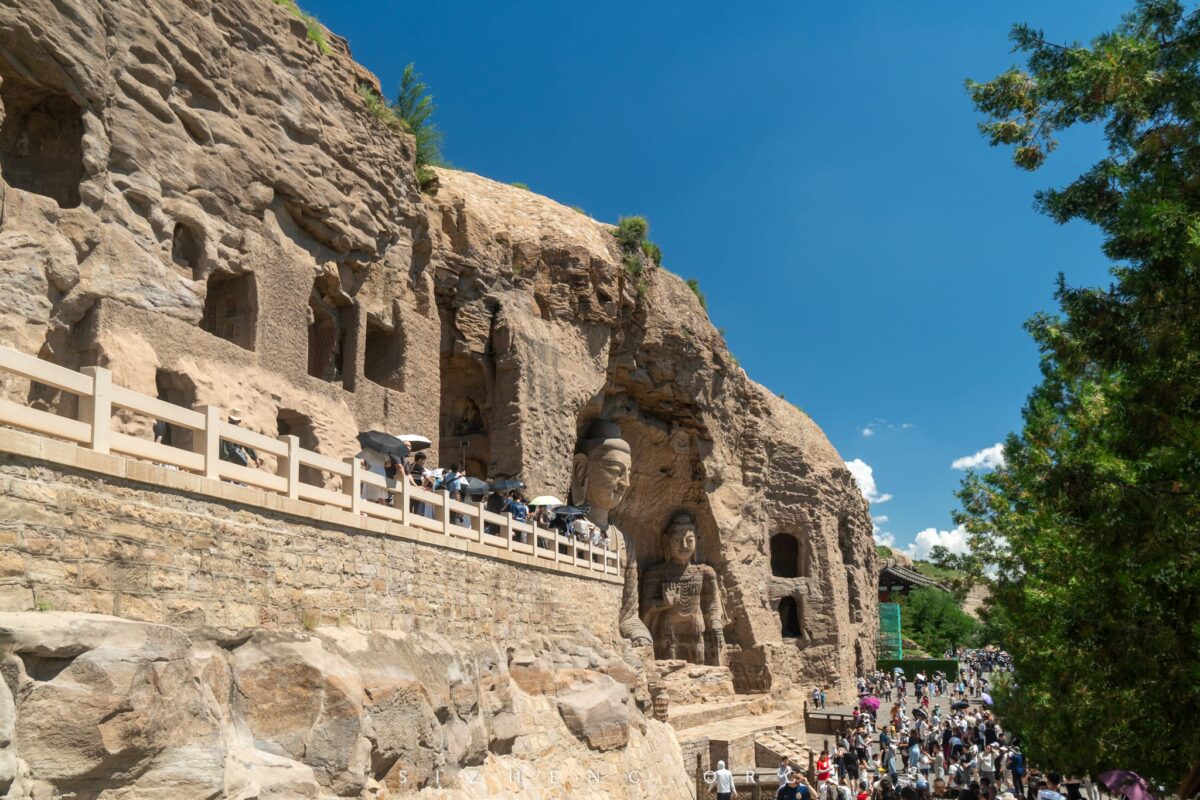
A Brief History of the Yungang Grottoes
The Yungang Grottoes boast a rich history, with their construction spanning over several centuries. There are 45 major caves and 252 smaller caves, housing over 51,000 statues of Buddha.
The evolution of the caves can be divided into three distinct periods: early, middle, and late stages.
- Early Period (Caves 16-20): The Five Caves of Tanyao are the prime examples of the early caves. These caves were carved during the Northern Wei Dynasty2 and display a mix of artistic styles influenced by Gandhara, Gupta, and Mathura art, which were introduced to China through the Silk Road. The Tanyao Caves were one of the earliest constructions and demonstrate the initial combination of various artistic traditions.
- Golden Age (Caves 1-13, except 4): The middle period marks the golden age of Yungang Grottoes, with significant contributions during Emperor Xiaowen’s reign before the Northern Wei capital moved to Luoyang. The statues from this period exhibit a combination of Indian Gupta artistic traits and Chinese aesthetics, leading to a unique, integrated style. The caves from this era display complex carvings, including multi-layered structures, central pillars, Buddha altars, and walls adorned with vivid decorations such as flying deities and musicians.
- Later Period (Post-Northern Wei): After the fall of the Northern Wei, the construction of the caves continued under the patronage of local elites and commoners. The later caves reflect the further development of Buddhist art and the sinicization of the grottoes, showcasing a more localized artistic influence.
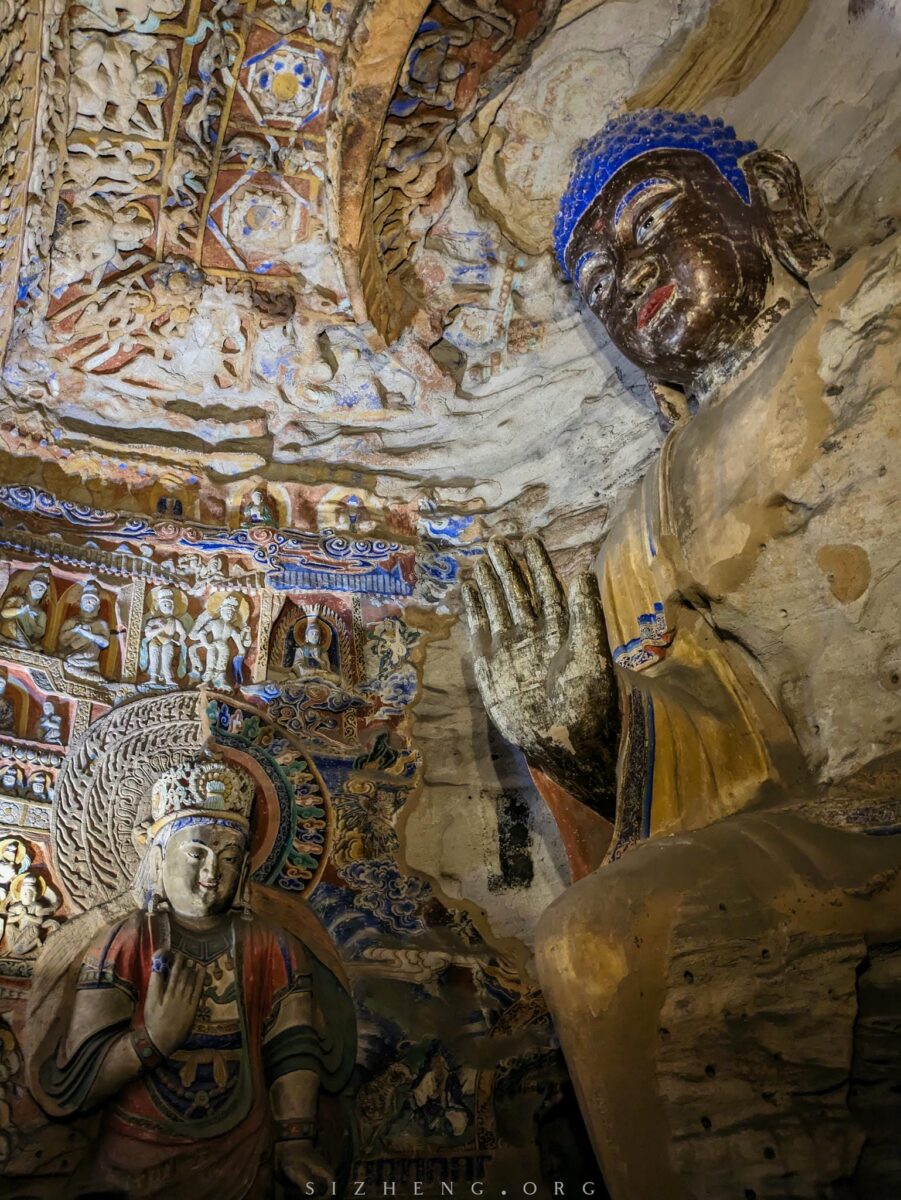
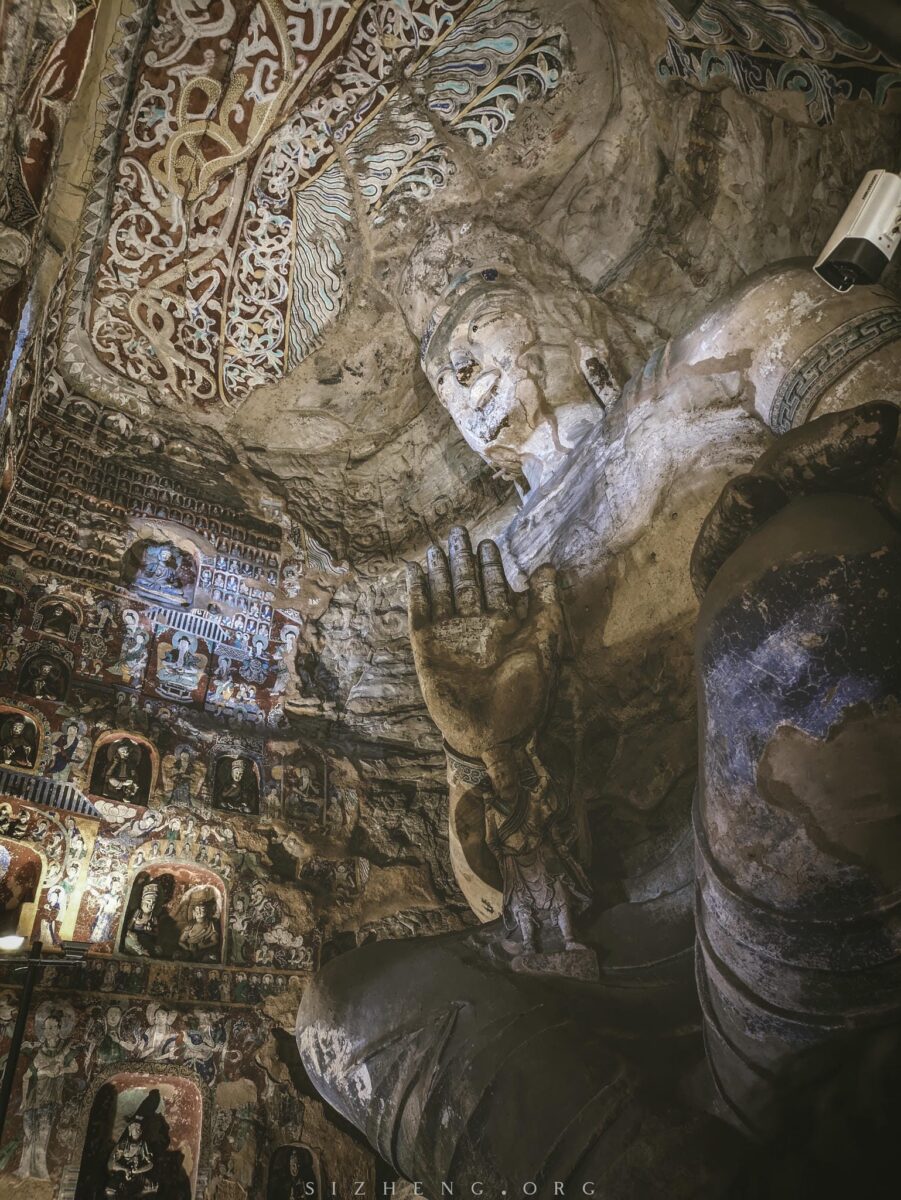

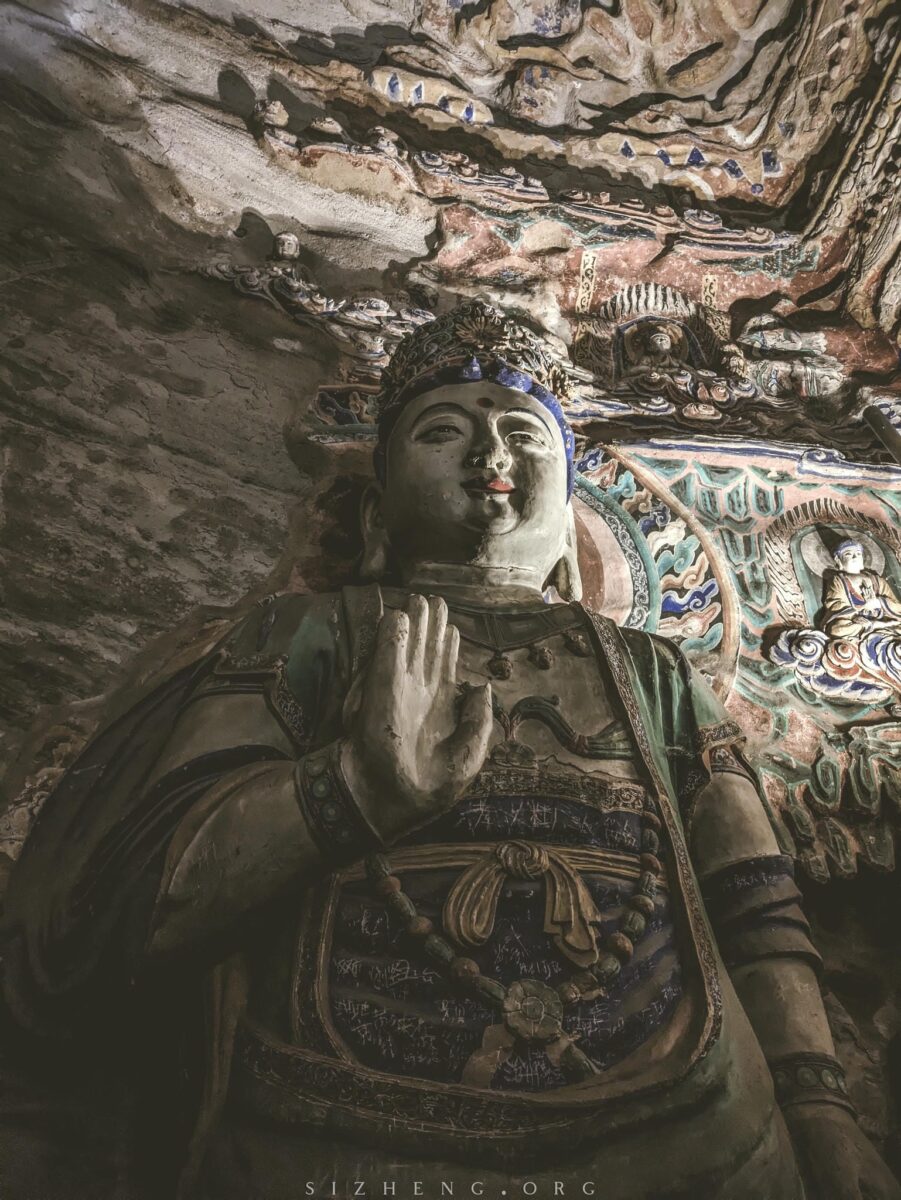
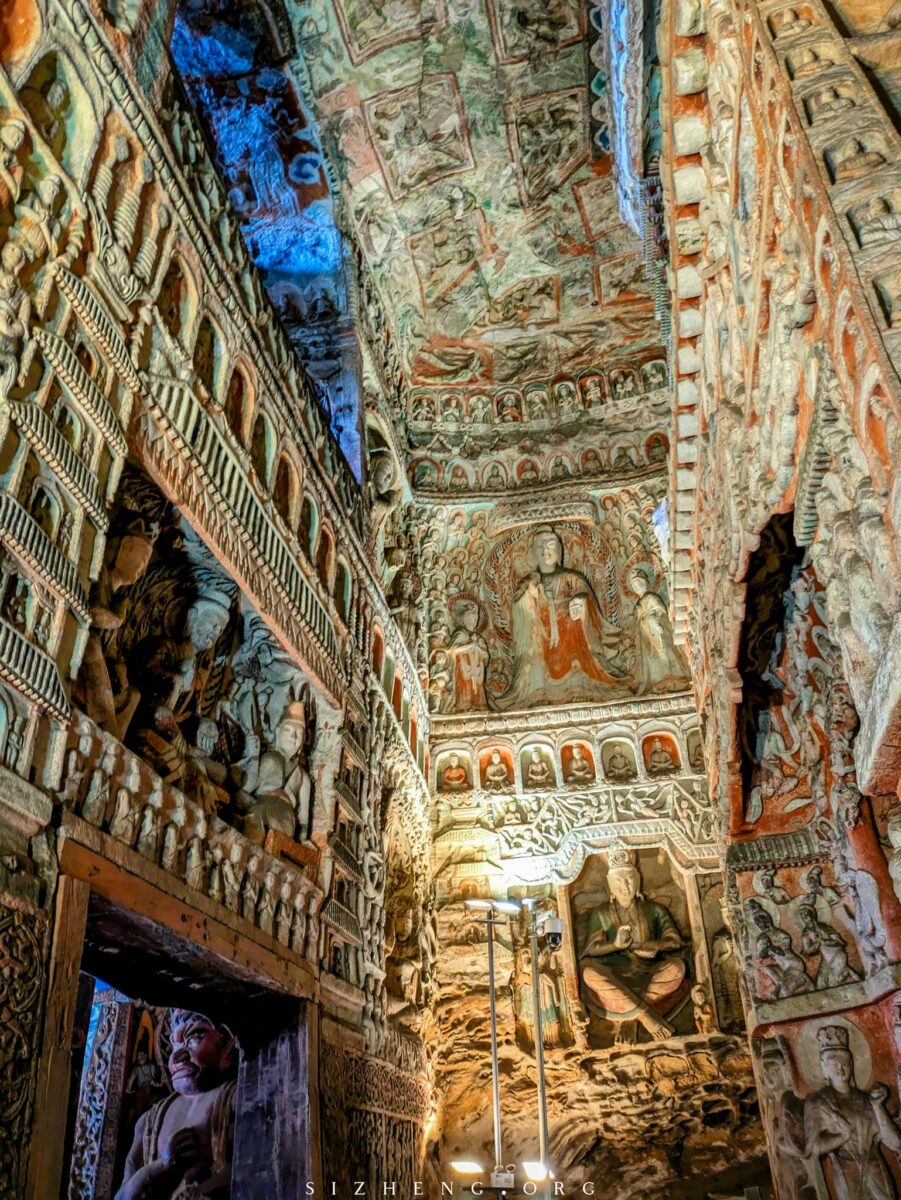
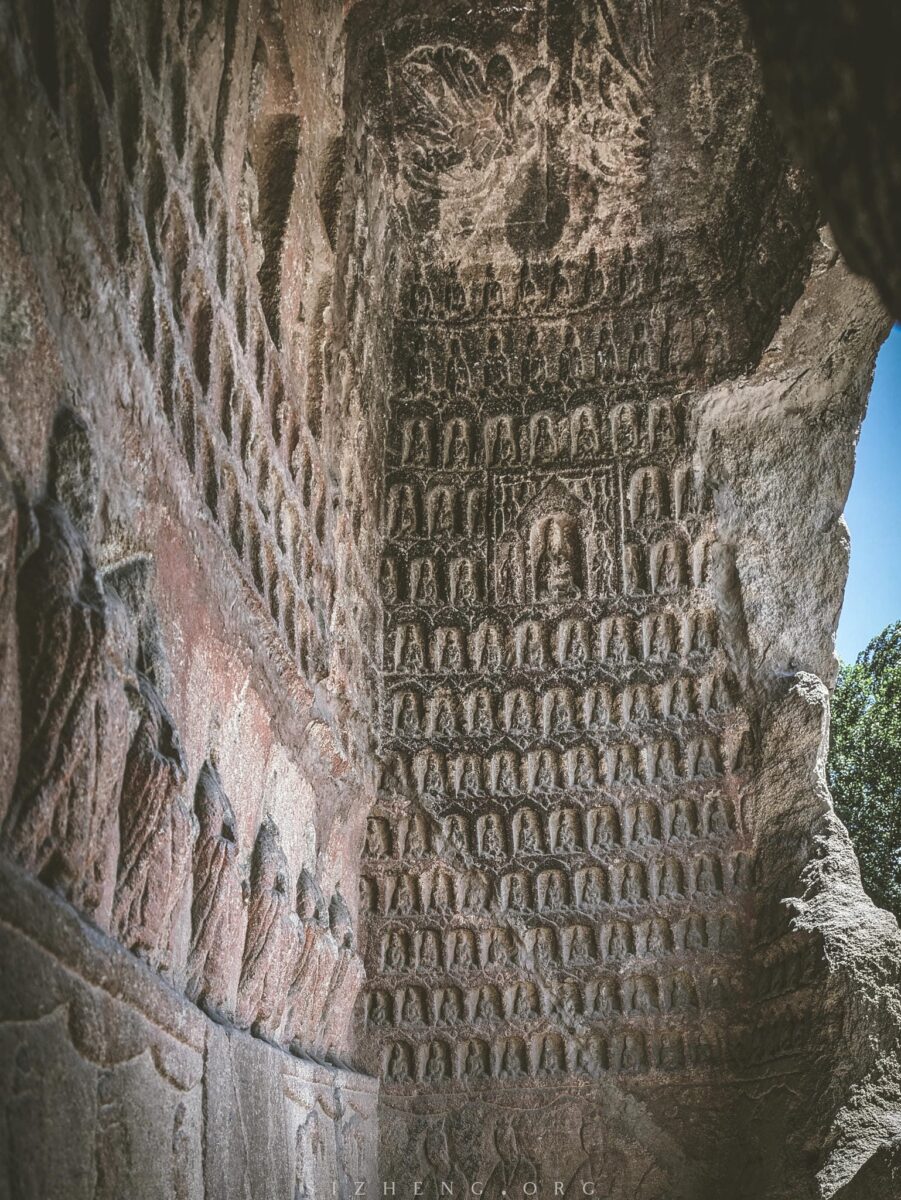

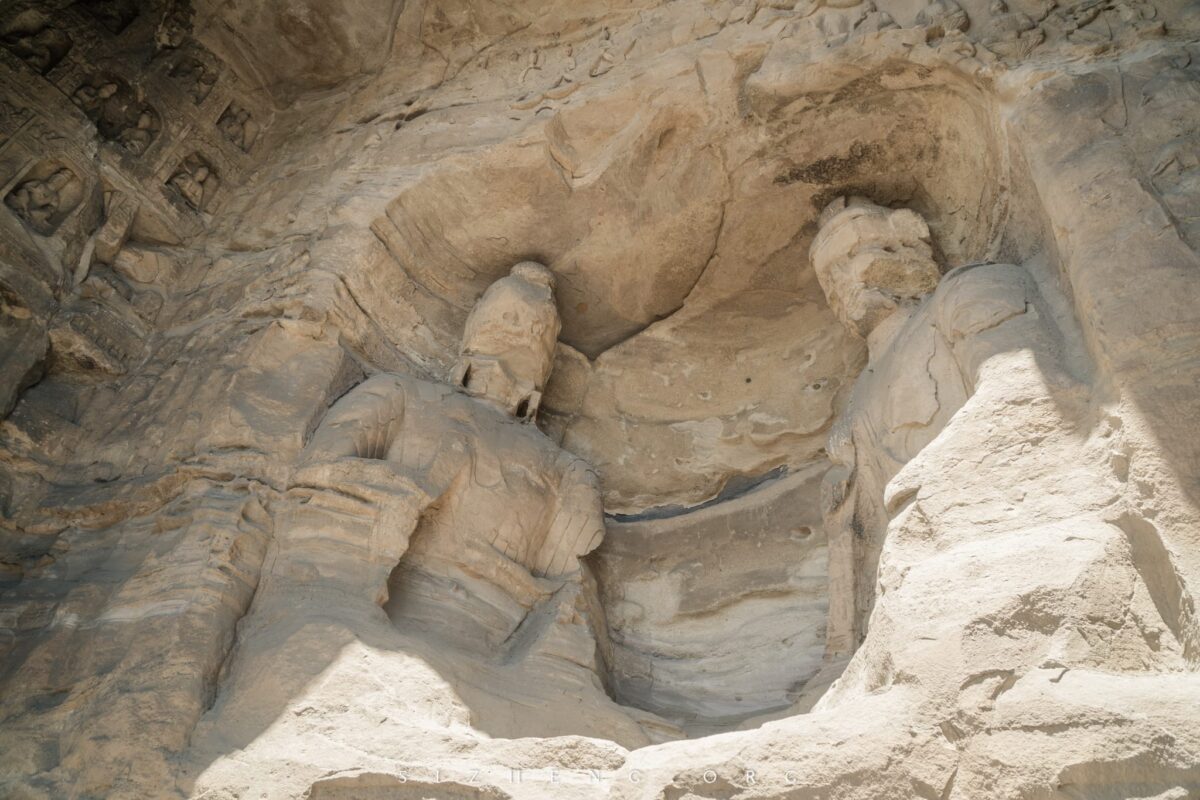
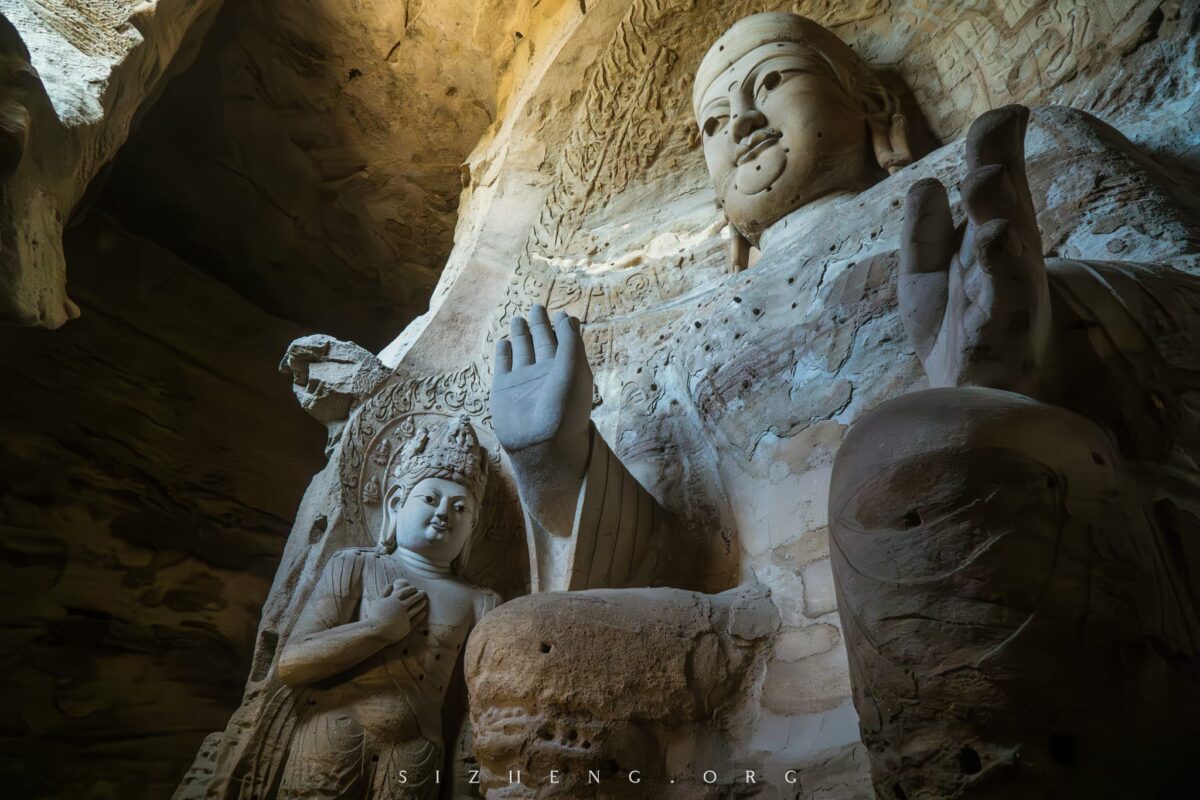

Highlights of the Yungang Grottoes
- Cultural Melting Pot: The Yungang Caves showcase the incredible cultural and artistic fusion that occurred during the Silk Road era. By combining elements from Central Asia, India, and local Chinese traditions, a remarkable and varied artistic expression was born.
- The Two Buddhas: One of the most intriguing features of the Yungang Grottoes is the depiction of two Buddhas sitting side by side. This imagery is believed to represent Emperor Xiaowen and Empress Dowager Feng, symbolizing their co-regency. In Buddhist terms, Empress Feng is depicted as the “Present Buddha,” while Emperor Xiaowen is the “Future Buddha.”
- Influence of Nomadic Culture: The Yungang Grottoes also reflect the influence of the nomadic Xianbei culture, evident in some of the artistic elements and themes found within the carvings.
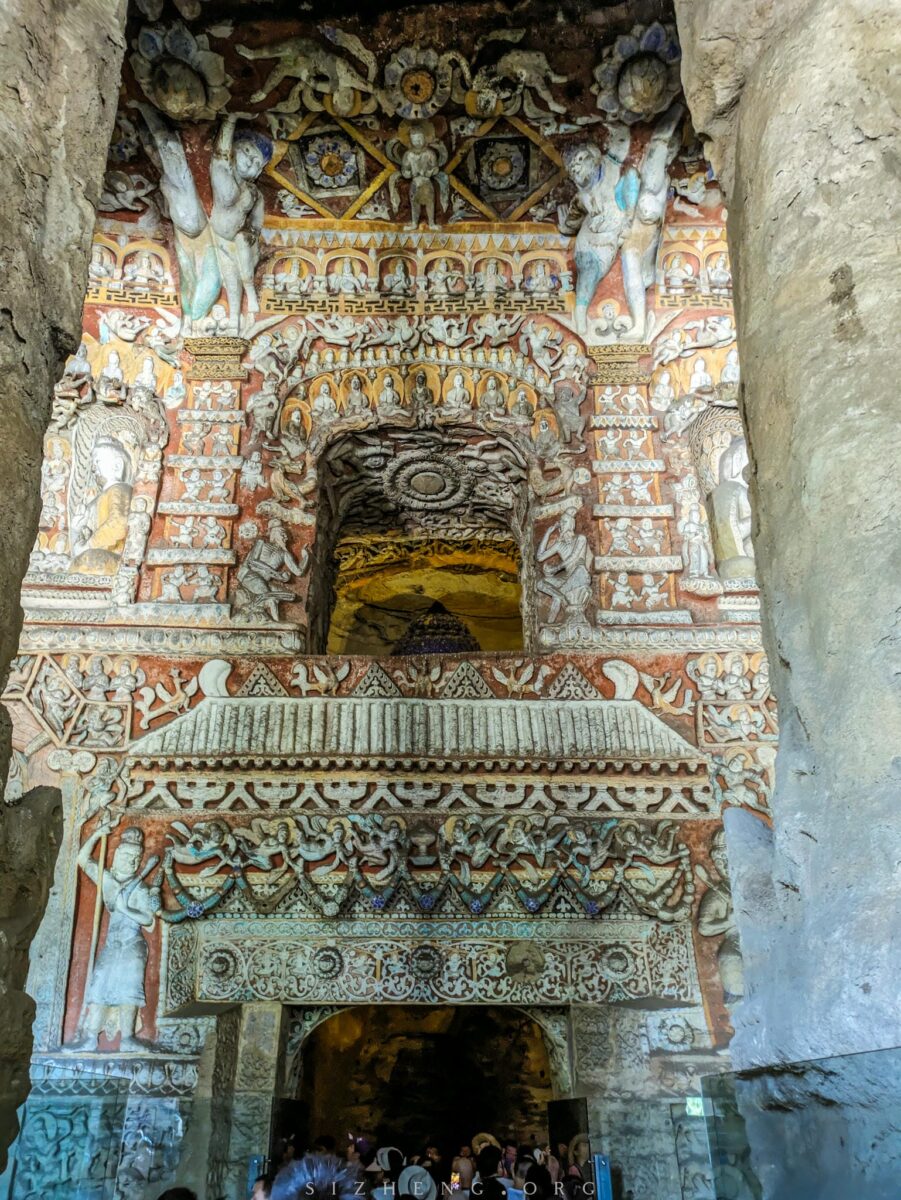
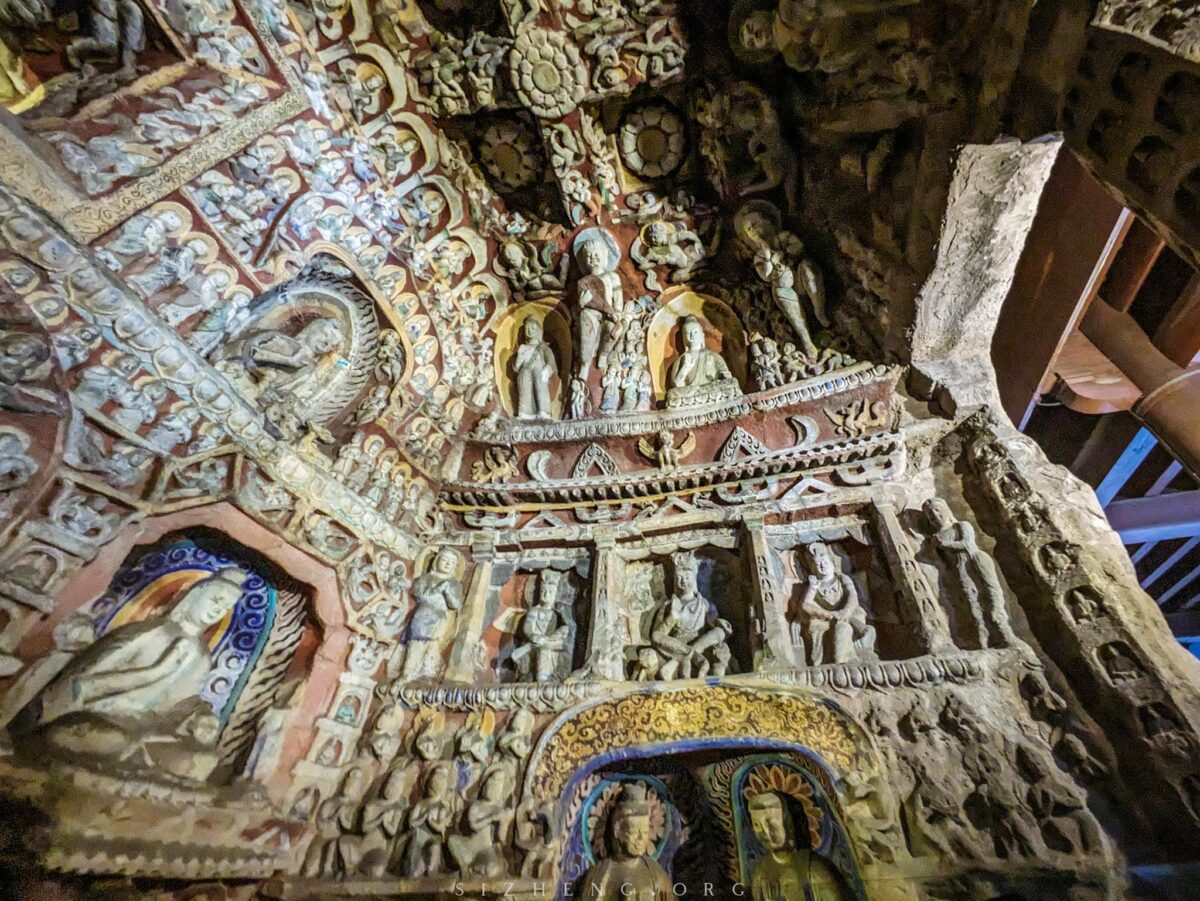

A Personal Encounter with Yungang’s History
Tanyao, the monk who kickstarted the creation of the initial caves at Yungang Grottoes, is at the center of one of the most fascinating tales. Little is known about his background, but legend has it that he was called to the Northern Wei capital by Emperor Wencheng. Tanyao’s commitment to revitalizing Buddhism following the harsh rule of Emperor Taiwu, who tried to wipe out the religion, sparked the ambitious endeavor of sculpting the Yungang Grottoes.
Tanyao had a dream of making enduring symbols of faith that could withstand political turmoil. With the backing of the emperor, he launched a grand project that not only acted as a form of repentance for the empire’s previous anti-Buddhist deeds but also sought to ensure the religion’s longevity in China. The Five Caves of Tanyao, starting with the earliest one at Yungang, were meticulously carved in hopes of bringing blessings to the five emperors of Northern Wei.
Conclusion
The Yungang Grottoes in Shanxi, China, are a UNESCO World Heritage site known for their intricate carvings and rich history. Spanning several centuries, the caves reflect a blend of artistic styles from Central Asia, India, and China, showcasing a unique cultural exchange. The site’s evolution can be divided into early, middle, and late periods, each contributing to the diverse artistic expression found within the grottoes.
They are more than just a historical site; they are a vibrant tapestry of art, culture, and history. Whether you are a history enthusiast, an art lover, or a curious traveler, the Yungang Grottoes offer a mesmerizing glimpse into China’s ancient past.
Plan your visit to the Yungang Grottoes and immerse yourself in a world where history and art come alive!
- Yungang Grottoes https://whc.unesco.org/en/list/1039/ ↩︎
- The Northern Wei Dynasty (386–535 CE) was a transformative period in Chinese history, known for unifying northern China, adopting and promoting Buddhism, and initiating significant cultural and administrative reforms. https://en.wikipedia.org/wiki/Northern_Wei ↩︎


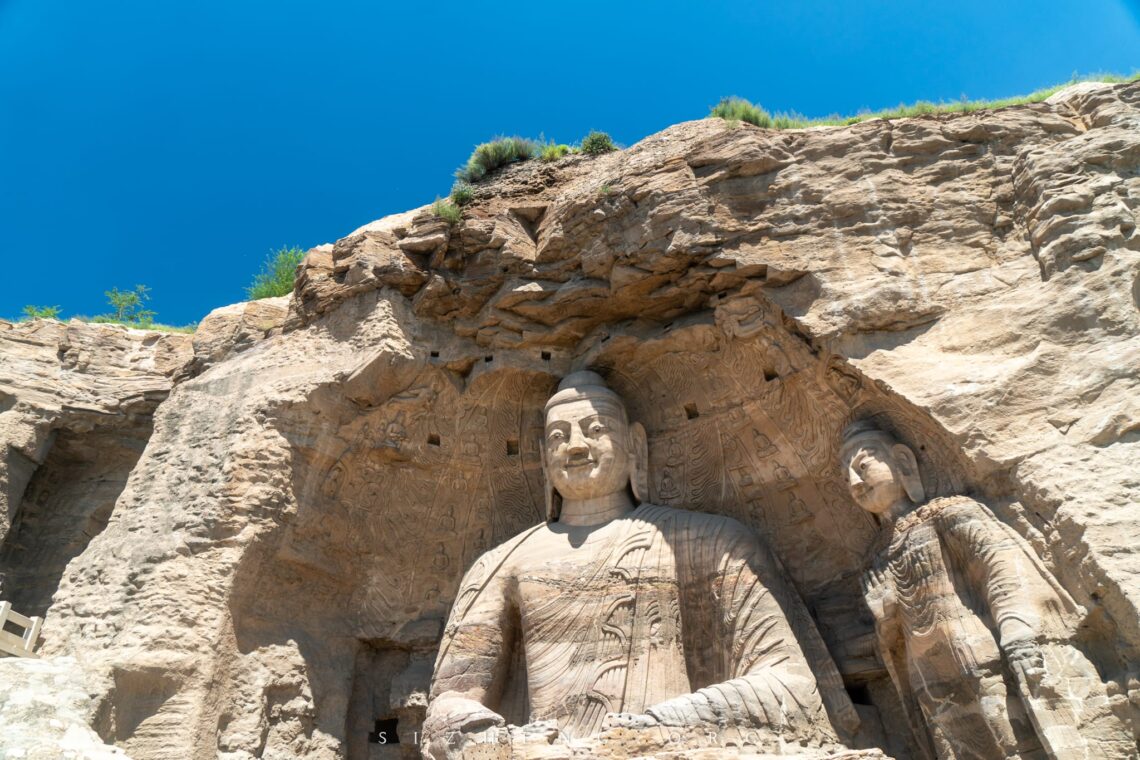
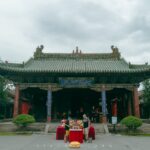



Leave a Reply